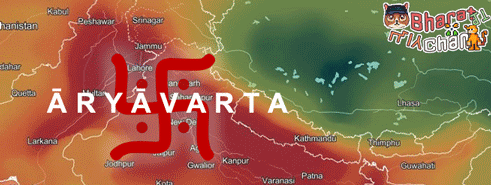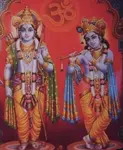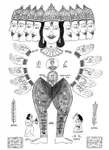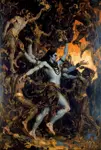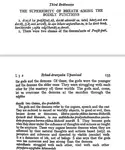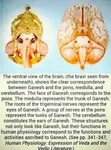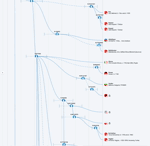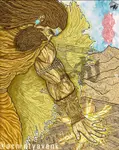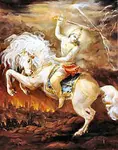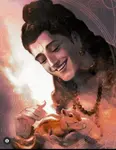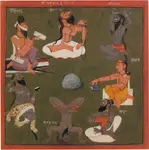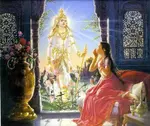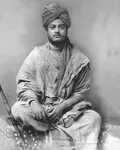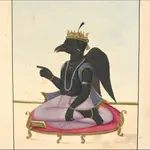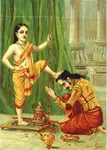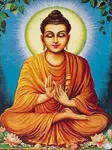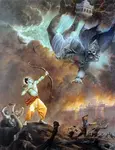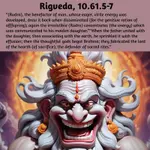Recent Posts
help with mujeet spreading propaganda
Varnashrama
Some artwork I made using AI
Discourse on the Upaniṣads
Hindus are doomed
B-bros
Yaar Pajeet
Is Indra considered the Supreme God In vedic hindu...
coping seething dilating
was Vritra really a serpent ? In my opinion it was...
systematized Theology anyone ?
Kindness will save the world
Opinions on Rasa Panchadhyayi ?
Why do Chintus celebrate Brahmahatya ?
somebody explain me this mental illness of worship...
lineage investigation
i hate this madarchod ka pilla
काकभुशुण्डि
Is Shiva an Indo-European deity?
some betichods who sold the religion for cheap rew...
It is absolutely ridiculous that Hindus worship a ...
If a muslimahh ties you rakhi should one assume sh...
Hindu theology
muslims get hurt more if we abuse Muhammad instead...
leftists be like: lineage doesn't matter saar
is it worth escaping Samsara?
where are Hindu John Vattanky-ies ?
Castes in Sindh
As a Dalit I envy the feeling of religiosity among...
do you have faith in Bhagvad Gita ?
How vedas were passed down.
Reason behind prohibition of Meat, onion and garli...
watch this jain baba bragging about jains exploiti...
Ashwamedha Yagya
Shubh Vijaydashmi Bhach
To all my Musleem Bhachanners

yqdMUL
No.78
>Dyaus (Sanskrit: द्यौष्, IAST: Dyáuṣ) or Dyauspitr (Sanskrit: द्यौष्पितृ, IAST: Dyáuṣpitṛ́) is the Rigvedic sky deity. His consort is Prthvi, the earth goddess, and together they are the archetypal parents in the Rigveda
>Dyauṣ stems from Proto-Indo-Iranian *dyā́wš, from the Proto-Indo-European (PIE) daylight-sky god *Dyēus, and is cognate with the Greek Διας - Zeus Patēr, Illyrian Dei-pátrous, or Latin Jupiter (from Old Latin Dies piter Djous patēr), stemming from the PIE Dyḗus ph2tḗr ("Daylight-sky Father")
>The noun dyaús (when used without the pitṛ́ 'father') refers to the daylight sky, and occurs frequently in the Rigveda, as an entity. The sky in Vedic writing was described as rising in three tiers, avamá, madhyamá, and uttamá or tṛtī́ya
>Dyáuṣ Pitṛ́ appears in hymns with Prithvi Mata 'Mother Earth' in the ancient Vedic scriptures of Hinduism
>In the Ṛg·veda, Dyáuṣ Pitṛ́ appears in verses 1.89.4, 1.90.7, 1.164.33, 1.191.6, 4.1.10. and 4.17.4. He is also referred to under different theonyms: Dyavaprithvi, for example, is a dvandva compound combining 'heaven' and 'earth' as Dyauṣ and Prithvi
>Dyauṣ's most defining trait is his paternal role. His daughter, Uṣas, personifies dawn. The gods, especially Sūrya, are stated to be the children of Dyauṣ and Prithvi. Dyauṣ's other sons include Agni, Parjanya, the Ādityas, the Maruts, and the Angirases. The Ashvins are called "divó nápāt", meaning offspring/progeny/grandsons of Dyauṣ. Dyauṣ is often visualized as a roaring animal, often a bull, who fertilizes the earth

9DJe2Q
No.79
>>78(OP)
Next do for Indra

yqdMUL
No.80
>>78(OP)
>Dyauṣ is also known for the of his own daughter, which, according to Jamison and Brereton (2014), is vaguely but vividly mentioned in the Rigveda
>Dyauṣ is also stated to be like a black stallion studded with pearls in a simile with the night sky
>Indra's separation of Dyauṣ and Prithvi is celebrated in the Rigveda as an important creation myth
>The Aryans looked up to the bright sky and worshipped it under the name of Dyu or Dyaus. This term is equivalent to the Greek Zeus and the first syllable of the Jupiter It is also similar toTiu of the Saxons and the Zio of the Germans
>These common names under which the sky-god was worshipped by the different cultures of ancient times prove that the sky was worshipped under these names by the primitive Aryans in their original home. So, earliest divine power in Vedic literature is Dyaus Dyaus was referred as Dyaus Pitr, which later became Ju-piter Pitr means Prithvi and Dyaus was coupled with prithivi and the two Dyaus-Prithivi are the universal parents
>Rig-Vedic Aryans called the sky of day as Mithra corresponding to the Zend Mithra; and they called the sky of night Varuna, corresponding to the Greek Ouranos Varuna, apart from being the god of the sky, is also the god of law of nature Rta Varuna is also lord of the Patal Loka (nether world). He is one of the most prominent gods in the Rig-Veda, and lord of the heavens and the earth
>Indra and Marut
>While the Hindu Aryans of the Punjab continued to worship the ancient sky-god under the ancient names of Dyu, Mitra, and Varuna, they paid special homage to the sky that rains, which they called Indra Rise of rivers and the luxuriance of crops depend on the rain-giving sky; and in course of time, Indra became the most prominent deity in the Vedic society

!0zbT1tN/vCjhnWJ

jednv3
No.81
>>80
>Dyauṣ is also known for the of his own daughter

43MGM9
No.141
>>80
Deboonked a lot retard

RJDQ6b
No.142
>>81
are faizan bhay aap yaha
